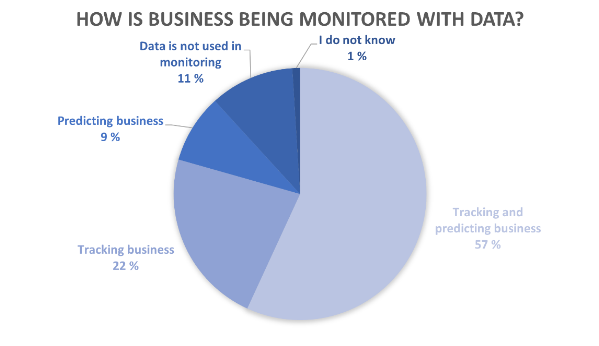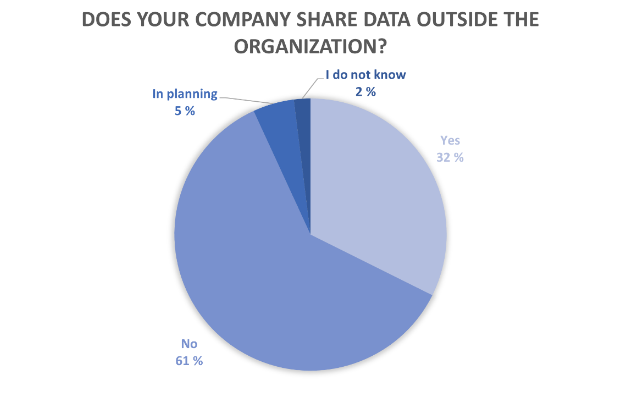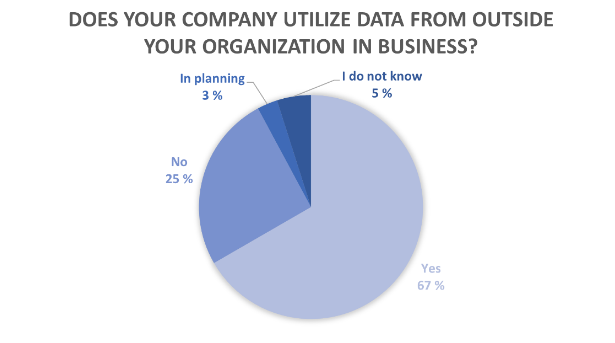Benefits of data economy not yet fully understood in Finnish companies
The effective use of data is a valuable business tool for enabling business and asset growth as well as promoting exports. It can also open possibilities for commercialization and the development of business operations, logistics and commodities within and across industries.
Data usage should be increased in Finnish companies.
The current challenges are the quality of data use and the lack of resources and understanding, which could be improved by increasing opportunities for collaboration, funding new innovations and broadening understanding.
Data Economy program conducted a survey on the current state of data use and sharing among Finnish companies in the spring 2023. The survey received responses from more than 100 respondents and from a wide range of sectors, including manufacturing and production. All business sizes are equally represented in the survey.
The survey concentrated on differences between industries and company size in data personnel, data strategy, data monitoring, and internal and external data sharing.
Companies are doing business with data, but is there a lack of implementation?
Today, many companies are using data to manage their business (Figure 1) through monitoring and forecasting. By monitoring and analyzing data, a company can identify recurring patterns and changes that allow it to predict future steps even in the long term.
In addition, many companies are managing their business either through data monitoring or forecasting. Only a small share of companies does not have any data monitoring tools in place. It would be important for Finnish companies to increase their use of these different steering tools, as they together enable more means to identify business opportunities.

Figure 1 (reference Greta Neffling)
Most of the companies do not have personnel specialized in data such as Chief Data Officer (CDO). However, the survey shows that more companies currently have a data strategy or are planning one. Companies are beginning to identify ways of using their own data to improve their data strategy. On the other hand, the lack of a broader understanding of the business opportunities of data could contribute to companies not yet having a workforce specialized in data.
Sharing data is the most challenging factor
There are broader differences in data use and sharing (Figure 2 and 3) but the difference in responses between company sizes is small. Currently, the majority of companies do not share data outside of their own organization. Then again, most of the companies utilize external data in their business activities.

Figure 2 (reference Greta Neffling)

Figure 3 (reference Greta Neffling)
The survey reveals that Finnish companies should increase the use and sharing of data. There are also differences in the quality of data use. Moreover, smaller companies may not have the same resources to develop the quality and tools for data use as large companies. The challenge may also be a lack of understanding of the advantages and the risks involved.
Based on the answers, the Data Economy program aims to increase the cooperation opportunities between companies of different sizes, especially smaller ones due to a higher need.
The program also intends to broaden the understanding of data economy and data in Finnish companies. The program believes that one solution could be funded projects that are based on the call for ideas.
The Data Economy program will continuously monitor the development of data in Finnish companies through future data usage surveys, as an example.
Could your company benefit from new ideas and developments related to data sharing?

